In 2003, a Russian boarding school for deaf students caught fire in the middle of the night. In the old building, there were no flashing alarm lights or vibrating beds to awaken the students. There were no emergency precautions in place at all. Instead, 28 young boys lost their lives to the blaze, while teachers frantically ran room to room, desperately pulling children from their beds.
Catastrophe can strike at any time, anywhere. Imagine learning there was a major disaster near your home, but not having any reliable information about it. Imagine the fear and panic caused by a flood, hurricane, or wildfire. If you couldn’t communicate with anyone, would you know what to do? If your hard of hearing parent were in the disaster zone, would anyone help them?
Centralized emergency management provisions for the Deaf
The severe lack of centralized emergency management provisions for the Deaf is alarming, and definitely unequal. While the hearing population gets bombarded with crisis updates across multiple media, to the point of redundancy; deaf citizens are left confused, trying to follow news reports without closed captioning or digging for info on the web. Deaf individuals are more likely to miss early warnings because they aren’t listening to the radio or television. Keeping up with real-time developments is difficult when you cannot just flip on the news, and relying on secondhand information from hearing citizens is hardly sufficient. Following emergency situations, many deaf survivors report that they did not fully understand what occurred until a few days or even weeks later.
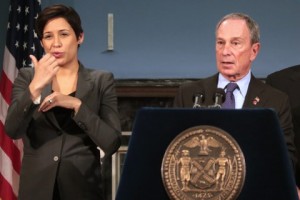 During the Hurricane Sandy press conferences, I had to firmly advocate for visibility on screen. What Mayor Bloomberg had to say was critical for New Yorkers to know, and it was my job to make sure that message was delivered to the deaf community. In the middle of a crisis, ASL interpreters cannot do our jobs from the sidelines! We should not have to insist on the importance of our role, and it is uncomfortable to defend yourself at a time when people may be in danger. Interpreters serve the community best when they are front and center. I have heard numerous reports of interpreters being present during press conferences, but being left out of the shot on air. How on Earth can an interpreter deliver a message to the deaf if he or she cannot be seen on TV?
During the Hurricane Sandy press conferences, I had to firmly advocate for visibility on screen. What Mayor Bloomberg had to say was critical for New Yorkers to know, and it was my job to make sure that message was delivered to the deaf community. In the middle of a crisis, ASL interpreters cannot do our jobs from the sidelines! We should not have to insist on the importance of our role, and it is uncomfortable to defend yourself at a time when people may be in danger. Interpreters serve the community best when they are front and center. I have heard numerous reports of interpreters being present during press conferences, but being left out of the shot on air. How on Earth can an interpreter deliver a message to the deaf if he or she cannot be seen on TV?
When there is a crisis, everyone needs to know the procedure. Every person deserves to remain informed and up-to-the-minute. It is not fair that, because deaf people can not speak, they get left behind or are moved around without explanation. It is not fair that a frightened deaf child looking for her parents during a disaster would just remain confused in silence. Emergency personnel arrive, but interpreters do not arrive with them.
When Hurricane Katrina hit, there seemed to be no FEMA provisions for the hard of hearing, and deaf survivors were never informed when volunteer interpreters were finally available. This lack of organization resulted in frustration and wasted interpreter resources, and it happens far too often. During the recent tornado in Moore, OK, deaf residents were fortunate to escape with their lives, receiving secondhand updates from friends and family members. An unofficial FaceBook page was created to account for deaf residents. Why is this our emergency management plan?
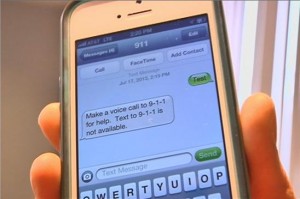
There are more technologies available to us than ever before, and I would love to see some of these utilized for large-scale disaster management. Personal data is collected by nearly every agency in existence, it seems like some of this information could be used by police and emergency responders to identify and assist deaf citizens. Text 911 is finally being widely implemented but, in the age of the smartphone, why has it taken so long? Some forward thinking is needed to further the practical use of our modern capabilities.
Public Servants & Emergency Services
In addition to better technological communication, I firmly believe that police, fire, and medical personnel should receive basic ASL training. There are more than 10 million individuals with some form of hearing loss living in the United States today, including 15% of those over 65. In the event of a major catastrophe, that means there are 10 million people who might not hear the news report or evacuation instructions, and these numbers are large enough to warrant some attention. Emergency responders should be trained to assist the deaf population with basic instructions in ASL because deaf citizens deserve the same service and protection as everyone else. Human life is the number one priority during a disaster and, if deaf individuals are not kept informed, they will likely be left behind.


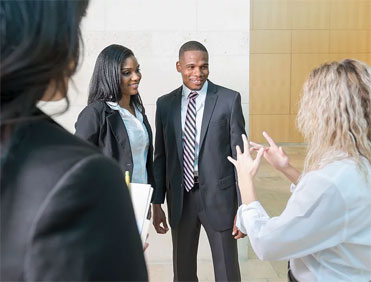






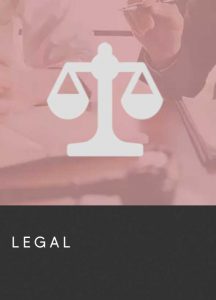

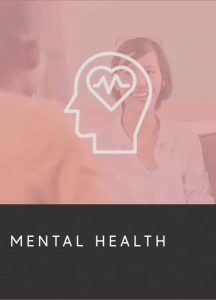

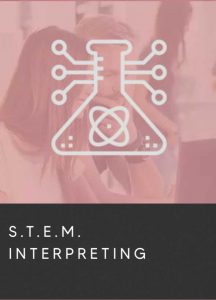

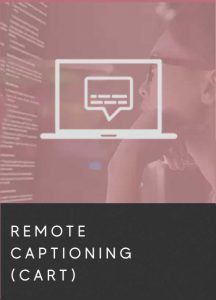

 Imagine this: you sit down on Sunday evening to stream a popular TV program– that show everyone will be discussing tomorrow. When the show starts, however, all the characters are using a completely foreign language. You can’t understand a thing! There are no subtitles and no closed captioning. Everyone on your Twitter feed is chatting about the program, but you aren’t able to follow the plot! This frustrating scenario is common for people who are Deaf or hard of hearing. Media technology is rapidly evolving, yet accessibility continues to lag behind.
Imagine this: you sit down on Sunday evening to stream a popular TV program– that show everyone will be discussing tomorrow. When the show starts, however, all the characters are using a completely foreign language. You can’t understand a thing! There are no subtitles and no closed captioning. Everyone on your Twitter feed is chatting about the program, but you aren’t able to follow the plot! This frustrating scenario is common for people who are Deaf or hard of hearing. Media technology is rapidly evolving, yet accessibility continues to lag behind. The 9th Circuit Federal appeals court recently ruled that
The 9th Circuit Federal appeals court recently ruled that  It is estimated that one in every six people on Earth experiences some degree of hearing loss; that number grows to one in three for individuals over 65 years old. These are people who deserve the same access to new media and pop culture as everyone else, and closed captioning helps provide that. Closed captioning doesn’t just serve individuals who are Deaf/HoH, closed captioning is helpful for those with autism and intellectual developmental disorders, making it easier to follow along with the video. Additionally, many closed captioning users are non-native speakers who utilize the text to help learn the spoken language. Have you ever tried to watch a sports game in a noisy bar? This is an example where closed captioning is helpful for everyone.
It is estimated that one in every six people on Earth experiences some degree of hearing loss; that number grows to one in three for individuals over 65 years old. These are people who deserve the same access to new media and pop culture as everyone else, and closed captioning helps provide that. Closed captioning doesn’t just serve individuals who are Deaf/HoH, closed captioning is helpful for those with autism and intellectual developmental disorders, making it easier to follow along with the video. Additionally, many closed captioning users are non-native speakers who utilize the text to help learn the spoken language. Have you ever tried to watch a sports game in a noisy bar? This is an example where closed captioning is helpful for everyone. The first closed captioning appeared on PBS stations in 1972, more than 20 years after hearing Americans had come to rely on TV as a source of news and entertainment. During this turbulent time in American history, television was forming culture and shaping public opinion, but Deaf individuals had to seek out this information in other ways. In 1979 the National Captioning Institute was created to work with TV networks to provide closed captioning, which was only available if the viewer purchased an expensive set-top decoder box: a barrier for many people. The Television Decoder Circuitry Act was passed in 1990, giving the Federal Communications Commission oversight of closed captioning. The Television Decoder Circuitry Act required almost all television receivers sold or manufactured have the built-in ability to display closed captioning by July 1, 1993. This act was later expanded upon to include regulations for digital television sets.
The first closed captioning appeared on PBS stations in 1972, more than 20 years after hearing Americans had come to rely on TV as a source of news and entertainment. During this turbulent time in American history, television was forming culture and shaping public opinion, but Deaf individuals had to seek out this information in other ways. In 1979 the National Captioning Institute was created to work with TV networks to provide closed captioning, which was only available if the viewer purchased an expensive set-top decoder box: a barrier for many people. The Television Decoder Circuitry Act was passed in 1990, giving the Federal Communications Commission oversight of closed captioning. The Television Decoder Circuitry Act required almost all television receivers sold or manufactured have the built-in ability to display closed captioning by July 1, 1993. This act was later expanded upon to include regulations for digital television sets. It took over a decade for the FCC to begin regulating Internet broadcast.
It took over a decade for the FCC to begin regulating Internet broadcast.  While certain online companies scramble to catch up, or make excuses for not providing adequate captioning, other entities are embracing the opportunity to break down communication barriers. Apple is one company that has gone above and beyond to welcome diverse users. By creating products with excellent built-in accessibility, and providing outstanding accessibility support, Apple really sets the bar for inclusion. Kickstarter recently launched it’s new video captioning initiative with the tag line “creativity is for everyone.” Kickstarter is one of the largest crowdfunding sites on the web; countless individuals have had their projects funded by other people around the world using this platform. By making it easy for people who are deaf to access these opportunities, Kickstarter helps open the door for future deaf innovators and entrepreneurs.
While certain online companies scramble to catch up, or make excuses for not providing adequate captioning, other entities are embracing the opportunity to break down communication barriers. Apple is one company that has gone above and beyond to welcome diverse users. By creating products with excellent built-in accessibility, and providing outstanding accessibility support, Apple really sets the bar for inclusion. Kickstarter recently launched it’s new video captioning initiative with the tag line “creativity is for everyone.” Kickstarter is one of the largest crowdfunding sites on the web; countless individuals have had their projects funded by other people around the world using this platform. By making it easy for people who are deaf to access these opportunities, Kickstarter helps open the door for future deaf innovators and entrepreneurs. During the Hurricane Sandy press conferences, I had to firmly advocate for visibility on screen. What Mayor Bloomberg had to say was critical for New Yorkers to know, and it was my job to make sure that message was delivered to the deaf community. In the middle of a crisis, ASL interpreters cannot do our jobs from the sidelines! We should not have to insist on the importance of our role, and it is uncomfortable to defend yourself at a time when people may be in danger. Interpreters serve the community best when they are front and center. I have heard numerous reports of interpreters being present during press conferences, but being left out of the shot on air. How on Earth can an interpreter deliver a message to the deaf if he or she cannot be seen on TV?
During the Hurricane Sandy press conferences, I had to firmly advocate for visibility on screen. What Mayor Bloomberg had to say was critical for New Yorkers to know, and it was my job to make sure that message was delivered to the deaf community. In the middle of a crisis, ASL interpreters cannot do our jobs from the sidelines! We should not have to insist on the importance of our role, and it is uncomfortable to defend yourself at a time when people may be in danger. Interpreters serve the community best when they are front and center. I have heard numerous reports of interpreters being present during press conferences, but being left out of the shot on air. How on Earth can an interpreter deliver a message to the deaf if he or she cannot be seen on TV?
 Sure staff meetings can be less than thrilling, but imagine you are sitting in a conference room where everyone is speaking a foreign language. For nearly an hour, your brain works overtime to discern even the most mundane aspects of conversation. Or perhaps you are in a class lecture, where the only material you understand is the supplementary PowerPoint: how terribly dull!
Sure staff meetings can be less than thrilling, but imagine you are sitting in a conference room where everyone is speaking a foreign language. For nearly an hour, your brain works overtime to discern even the most mundane aspects of conversation. Or perhaps you are in a class lecture, where the only material you understand is the supplementary PowerPoint: how terribly dull! With millions of deaf/HoH individuals living and working in the United States, all-inclusive events are finally becoming a societal standard. As someone who understands diversity and supports the use of deaf language, you’re more than happy to provide equal access in your establishment. But as a hearing individual, maybe you’re just not sure where to start.
With millions of deaf/HoH individuals living and working in the United States, all-inclusive events are finally becoming a societal standard. As someone who understands diversity and supports the use of deaf language, you’re more than happy to provide equal access in your establishment. But as a hearing individual, maybe you’re just not sure where to start. As discussed in my
As discussed in my  Deafness is not limited to special events, so providing access in the public sphere would be a logical next step toward equality. Captioning services ought to be provided everywhere, including busses, airplanes, and subways. No excuses! Deaf people are not disabled, they do the same things hearing people do, and it is important to remember that anywhere instructions or warnings are required. On a more personal level, take a moment to think about the deaf patients sitting in your waiting room, or hospital bed. Is there closed captioning on the TV? What about your deaf bar patrons, have you captioned the football game for them? As a movie theatre manager, have you thought about regularly offering captioned opening-day screenings of the latest films? Yes, as individual acts these may seem small, but it’s these little considerations that go a long way toward creating an atmosphere of equality!
Deafness is not limited to special events, so providing access in the public sphere would be a logical next step toward equality. Captioning services ought to be provided everywhere, including busses, airplanes, and subways. No excuses! Deaf people are not disabled, they do the same things hearing people do, and it is important to remember that anywhere instructions or warnings are required. On a more personal level, take a moment to think about the deaf patients sitting in your waiting room, or hospital bed. Is there closed captioning on the TV? What about your deaf bar patrons, have you captioned the football game for them? As a movie theatre manager, have you thought about regularly offering captioned opening-day screenings of the latest films? Yes, as individual acts these may seem small, but it’s these little considerations that go a long way toward creating an atmosphere of equality!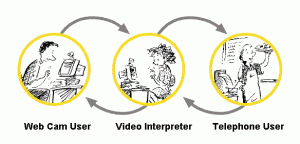 In a professional environment, creating equal access means ensuring your deaf employees can perform the same tasks as their hearing counterparts, and that deaf clients can easily contact your company. Of course, e-mail and instant messaging have become standard, which works well for simple deaf-to-hearing communication. But for dialogues, discussion, or debates, usinsg simple text communication isn’t always efficient. The telephone was a revolutionary device for hearing individuals, and video relay has helped Deaf/HoH people make use this common communication method. Video relay companies, such as the
In a professional environment, creating equal access means ensuring your deaf employees can perform the same tasks as their hearing counterparts, and that deaf clients can easily contact your company. Of course, e-mail and instant messaging have become standard, which works well for simple deaf-to-hearing communication. But for dialogues, discussion, or debates, usinsg simple text communication isn’t always efficient. The telephone was a revolutionary device for hearing individuals, and video relay has helped Deaf/HoH people make use this common communication method. Video relay companies, such as the 





